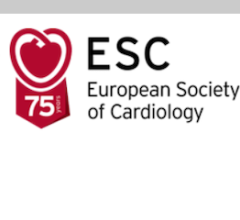
June 6, 2025 – A large retrospective review of more than 100,000 patients found the use of glucagon-like peptide-1 receptor agonists (GLP-1 RAs) in moderate peripheral artery disease (PAD) is associated with a decreased rate of cardiovascular events, major limb events and inpatient admissions. This is the first retrospective trial to evaluate the clinical impact of GLP-1 RAs for patients with moderate PAD. Findings were presented during the Society for Vascular Surgery’s Vascular Annual Meeting, in New Orleans, Louisiana.
One in 20 Americans over the age of 50 has PAD, the most common vascular disease in which leg arteries become narrowed, reducing and cutting off blood flow, contributing to 400 amputations performed each day in the United States.i An ankle-brachial index (ABI) test is used to diagnose PAD by measuring the ratio of blood pressure in the ankle and the arm. A normal ABI test result is 1.0 to 1.4. Patients with moderate PAD have an ABI of 0.4 to 0.9 and often experience cramps while walking. There is a high correlation of PAD and coronary events including heart attacks.
This study aimed to explore the impact of GLP-1 RAs on cardiovascular outcomes in patients with moderate PAD. GLP-1 RAs, such as tirzepatide and semaglutide, decrease rates of major adverse cardiac events and mortality in patients with diabetes mellitus, but little data exists on their impact in patients with moderate PAD. Data was sourced from the TriNetX research network, encompassing 101 hospital systems, and researchers identified two groups to analyze. Each group included over 55,000 patients. Group one included patients with moderate PAD who were started on GLP-1 RAs, and group two included patients with moderate PAD who were not started on GLP-1 RAs.
At one year, patients with moderate PAD who were started on GLP-1 RAs had fewer major adverse limb events (MALE) (0.8% vs 1.5%), major adverse cardiac events (MACE) (25.4% vs 29.3%), and decreased risk of hospitalizations (17.9 vs 26.8%). For this study, MALE were defined as acute limb ischemia requiring thrombectomy or major amputation, and MACE were defined as myocardial infarction, stroke, acute ischemic heart disease, and heart failure.
"GLP-1 RAs have the potential to benefit moderate PAD patients in more ways than one," said Catherine Go, MD, lead author and Medical Director of the Charleston Area Medical Center Limb Salvage Program. "Through this research, GLP-1 RAs not only benefited patient outcomes, but we also saw a decrease in LDL, triglycerides, hospital admissions. There is a unique opportunity for collaboration across specialties to raise awareness around the multiple benefits of GLP-1 RAs and determine the best care pathway to treat patients with PAD.”
With the ongoing PAD amputation and obesity epidemics, there is an opportunity to establish partnership and open communication between vascular surgeons and weight loss clinics to determine if a patient could benefit from GLP-1 RAs.
i Molina CS, Faulk JB. Lower Extremity Amputation. [Updated 2022 Aug 22]. In: StatPearls [Internet]. Treasure Island (FL): StatPearls Publishing; 2025 Jan-. Available from: https://www.ncbi.nlm.nih.gov/books/NBK546594/


 November 17, 2025
November 17, 2025 









